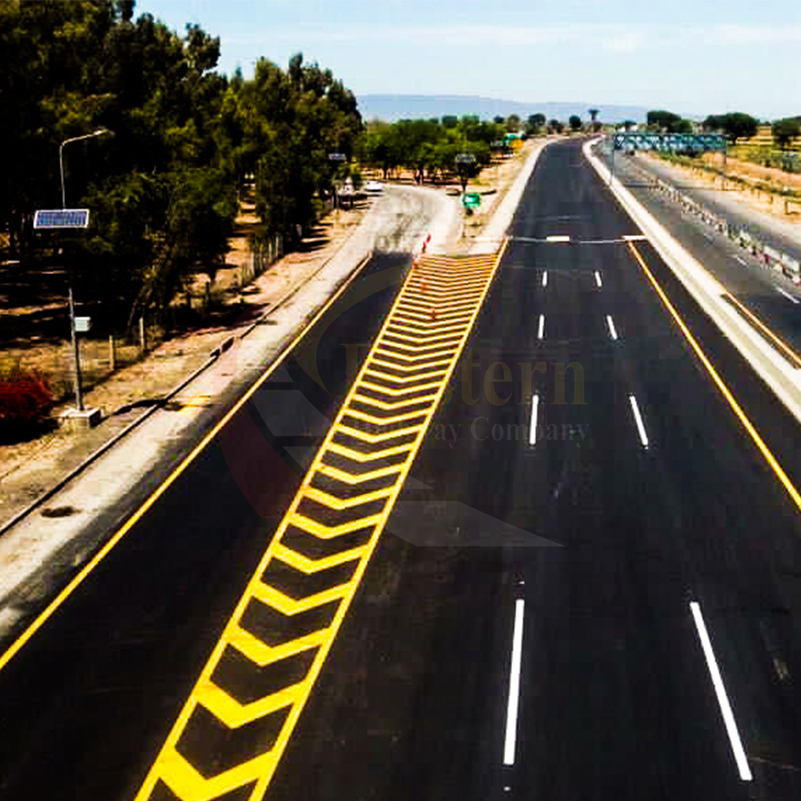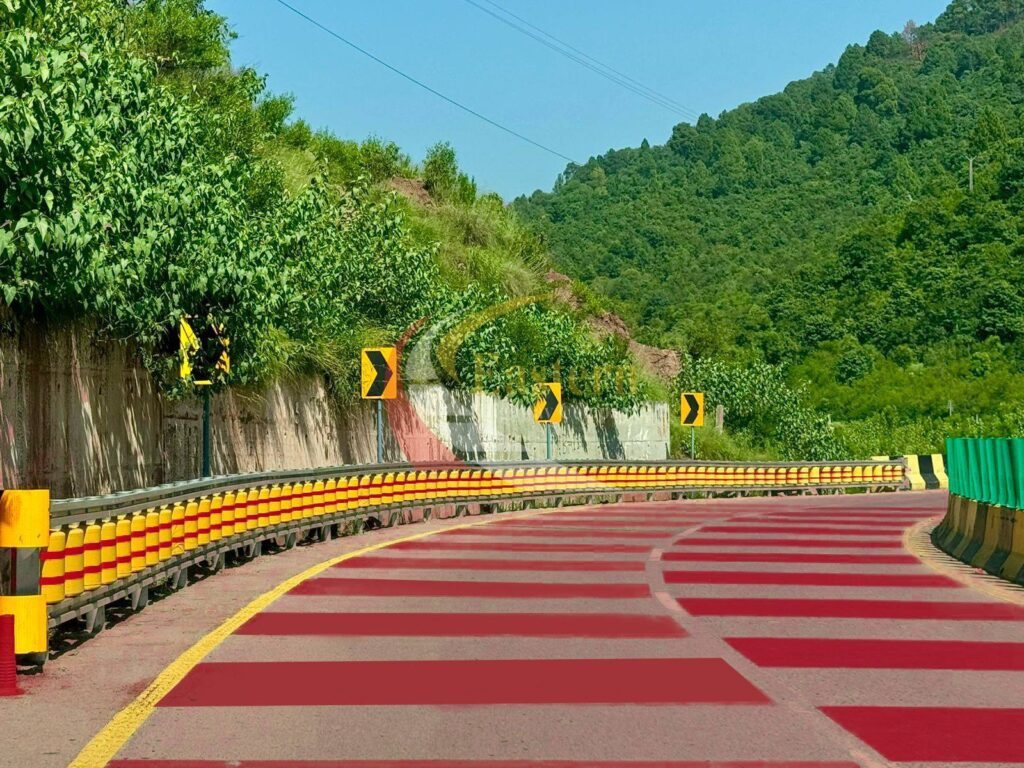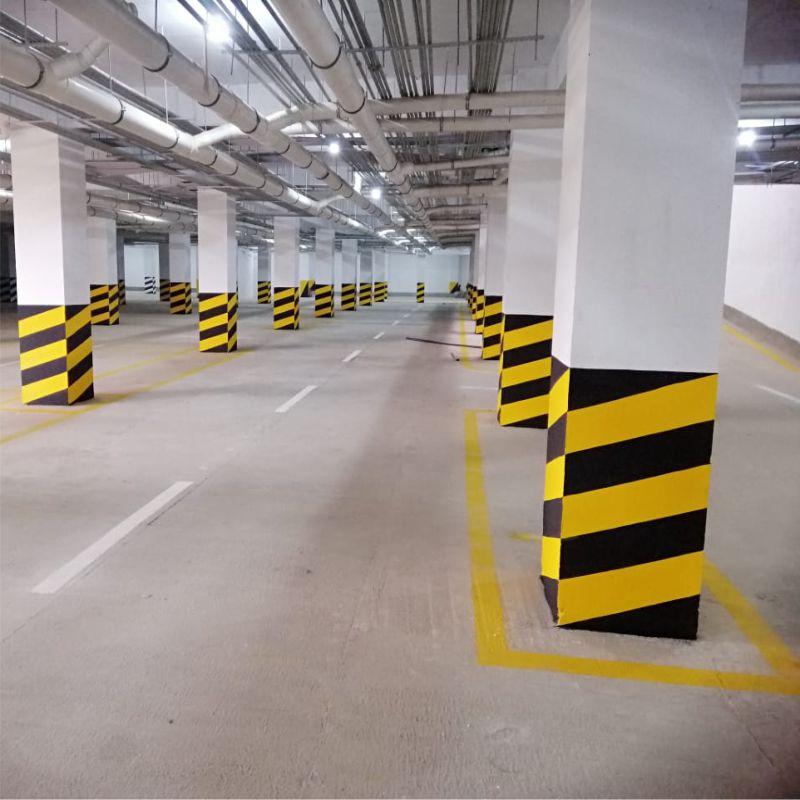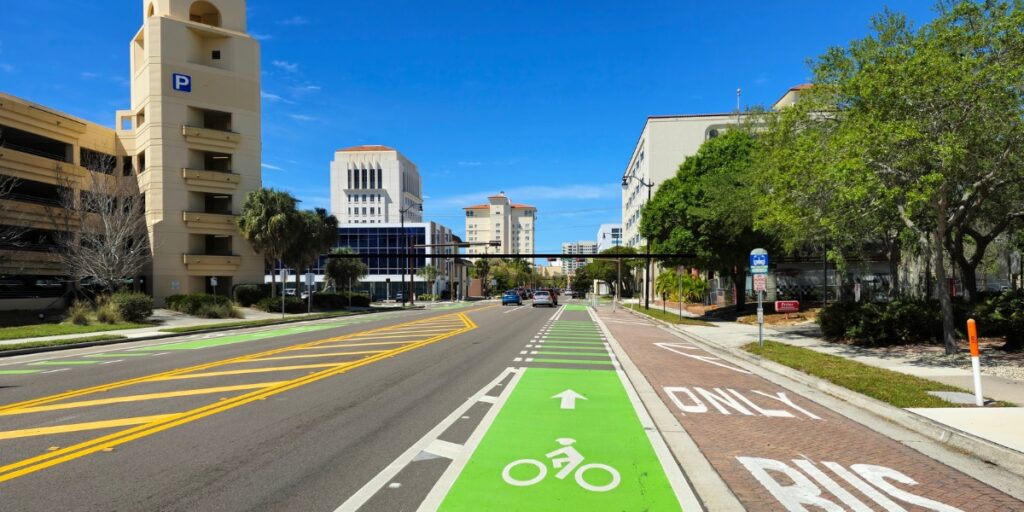When we think of road safety, we often picture traffic lights, speed limits, and road signs—but one of the most essential elements is right under our wheels: road paint. And we might think: why are roads painted? From crisp white lane dividers to bold yellow center lines, these markings play a crucial role in guiding traffic, preventing accidents, and maintaining order on busy streets and highways. Yet, many of us rarely stop to consider why roads are painted and what each line really means.
In this blog, we’ll explore the true purpose behind road markings and how they contribute to a safer, more efficient driving experience.
What Are Road Paints?
Before knowing why are roads painted, lets see what are road paints. Road paint is a specially formulated type of coating used to mark and define traffic lanes, pedestrian crossings, road edges, and various other features on roads, highways, and parking areas. It plays a vital role in traffic management and road safety by providing visual guidance to drivers and pedestrians.
Unlike regular paint, road paint is designed to withstand harsh outdoor conditions such as extreme temperatures, rain, UV exposure, and constant wear from vehicle tires. It must also dry quickly, adhere strongly to asphalt or concrete, and remain visible day and night.
Key Characteristics of Road Paint
Road paint is not just any ordinary paint—it is specifically engineered to withstand the demands of heavy traffic and outdoor exposure. Here are the key characteristics that make it suitable for road marking applications:
Durability:
Road paint must endure constant pressure from vehicles, as well as harsh weather conditions such as heat, rain, snow, and UV rays. It is formulated to resist abrasion, fading, and chipping, ensuring that the markings remain intact and visible for as long as possible. High-quality road paints can last months or even years, depending on the material used and traffic intensity.
Visibility
One of the most critical functions of road paint is to remain clearly visible at all times, especially during low-light conditions. To achieve this, many road paints include retroreflective materials, such as tiny glass beads. These beads reflect headlights back toward the driver, making the markings stand out at night or in poor weather, significantly improving road safety.
Fast-Drying
Time is of the essence when applying road paint, particularly on busy roads and highways. Fast-drying formulations are essential to reduce road closure times and minimize traffic disruption. These quick-set paints can often dry within minutes, allowing for a more efficient application process without compromising durability.
Color-Coded System
Different colors of road paint are used to convey specific messages and rules:
- White: Typically used for lane dividers, edge lines, and crosswalks.
- Yellow: Separates opposing traffic flows or marks no-passing zones.
- Red: Often used for bus-only lanes, emergency routes, or no-stopping zones.
- Blue: Commonly indicates accessible parking spots or areas reserved for persons with disabilities.
Each color plays a role in maintaining order, guiding traffic, and ensuring compliance with traffic regulations.
Types of Road Paint Commonly Used

Various types of road paints are available, each suited for specific environments, surfaces, and requirements. Here’s a breakdown of the most commonly used types:
Thermoplastic Paint:
Thermosplastic paint is a heat-applied road marking material made from synthetic resins and plasticizers. It becomes a liquid when heated and solidifies upon cooling, forming a thick, durable line. Thermoplastic paint is ideal for high-traffic areas due to its excellent longevity and skid-resistant properties. It can also incorporate glass beads for night-time visibility.
Solvent-Based Paint
Solvent-based paints dry quickly through the evaporation of solvents and are especially effective in dry, hot climates where water-based paints may not perform as well. These paints provide good adhesion and durability, making them a common choice for road striping and parking lots.
Water-Based Paint
A more environmentally friendly alternative, water-based paints are made using water as the primary solvent. They are low in VOCs (volatile organic compounds), making them safer for workers and better for the environment. Water-based paints are widely used in urban settings and for general road marking purposes.
Cold Plastic or MMA (Methyl Methacrylate)
MMA is a highly durable and long-lasting road marking solution that doesn’t require heating. It can be applied cold and cures chemically to form a hard surface. Known for its high reflectivity and weather resistance, MMA is perfect for permanent road markings and locations with heavy wear, such as intersections and pedestrian crossings.
Why are Roads Painted?
When driving, most people don’t give much thought to the painted lines on the road. But at Eastern Highway Company, we understand that every line, symbol, and mark has a specific purpose—and it plays a vital role in keeping our roads safe and efficient. Road painting is more than just adding color to asphalt; it’s a language of safety, regulation, and communication.
Enhancing Road Safety
The most important reason for painting roads is to ensure safety. Road markings guide drivers, cyclists, and pedestrians by clearly defining lanes, edges, pedestrian crossings, and stopping points. Center lines help separate oncoming traffic, while edge lines prevent vehicles from veering off the road. These visual cues are critical for reducing accidents, especially in low visibility conditions.
Organizing and Regulating Traffic Flow

Road paint keeps traffic organized. It tells drivers where to turn, when to stop, which lane to use, and where merging begins. Without these markings, intersections, roundabouts, and multi-lane roads would be difficult to navigate. Properly painted roads reduce confusion, improve traffic flow, and help prevent congestion.
The new blue painted bike lane will help organize and regulate the traffic flow! Thus answering why are roads painted!
Communicating Information to Road Users
Road markings act as real-time instructions. Arrows show permitted directions, symbols indicate special zones like bus or bike lanes, and words like “STOP” or “SLOW” alert drivers to upcoming conditions. This direct communication complements road signs and keeps drivers informed.
Defining Zones and Restrictions
Different colored lines and patterns help define areas with specific rules. Yellow lines often indicate no-parking zones or lane divisions, while red lines may highlight fire lanes or restricted access areas. These markings assist in law enforcement and help maintain road order.
Protecting Pedestrians and Cyclists
Crosswalks, school zones, and dedicated bike lanes are all made visible through road paint. These markings alert drivers to vulnerable road users and ensure their safety by slowing down traffic and guiding vehicles away from shared zones.
Supporting Night-Time Visibility
At Eastern Highway Company, we use high-quality retroreflective paints that reflect headlights at night, greatly improving visibility. These materials ensure that road markings remain effective even in dark or foggy conditions, reducing the risk of lane departures and missed turns.
Conclusion
Painted roads are essential for a safe and well-organized transportation system. They communicate silently but effectively, guiding millions of drivers every day. At Eastern Highway Company, we take pride in providing top-tier road marking services that meet international standards and enhance public safety.
Whether it’s a city street, a mountain road, or a dual carriageway, every line we paint has a purpose. Trust Eastern Highway Company to pave the way to safer roads.









